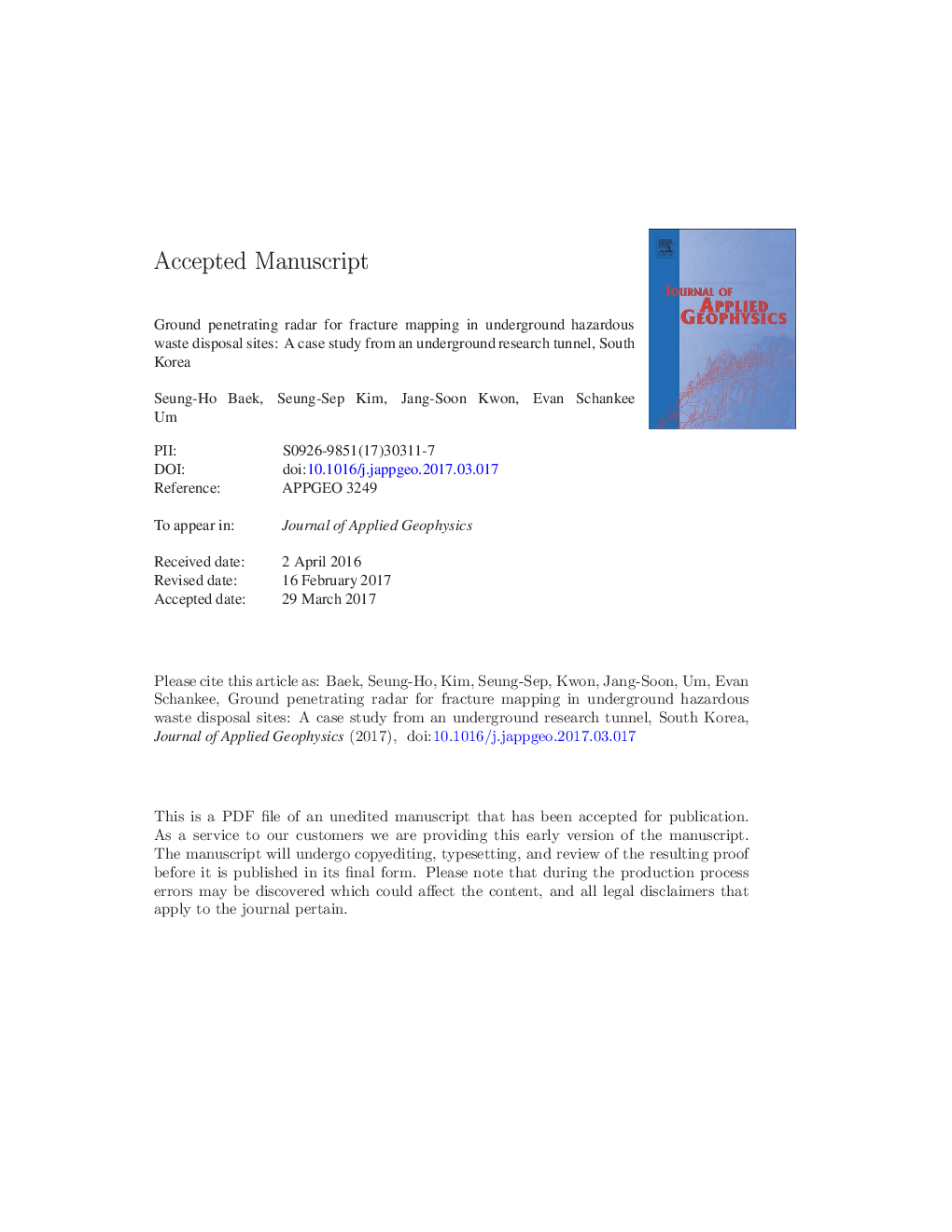| کد مقاله | کد نشریه | سال انتشار | مقاله انگلیسی | نسخه تمام متن |
|---|---|---|---|---|
| 5787105 | 1641110 | 2017 | 34 صفحه PDF | دانلود رایگان |
عنوان انگلیسی مقاله ISI
Ground penetrating radar for fracture mapping in underground hazardous waste disposal sites: A case study from an underground research tunnel, South Korea
ترجمه فارسی عنوان
رادار نفوذی زمین برای نقشه برداری شکستگی در محل دفن زباله های خطرناک زیرزمینی: مطالعه موردی از یک تونل تحقیقاتی زیرزمینی، کره جنوبی
دانلود مقاله + سفارش ترجمه
دانلود مقاله ISI انگلیسی
رایگان برای ایرانیان
کلمات کلیدی
رادار زمینی نفوذ، شکستگی، آزمایشگاه تحقیقاتی زیرزمینی، زباله های رادیواکتیو، آلودگی آب های زیرزمینی،
موضوعات مرتبط
مهندسی و علوم پایه
علوم زمین و سیارات
فیزیک زمین (ژئو فیزیک)
چکیده انگلیسی
Secure disposal or storage of nuclear waste within stable geologic environments hinges on the effectiveness of artificial and natural radiation barriers. Fractures in the bedrock are viewed as the most likely passage for the transport of radioactive waste away from a disposal site. We utilize ground penetrating radar (GPR) to map fractures in the tunnel walls of an underground research tunnel at the Korea Atomic Energy Research Institute (KAERI). GPR experiments within the KAERI Underground Research Tunnel (KURT) were carried out by using 200Â MHz, 500Â MHz, and 1000Â MHz antennas. By using the high-frequency antennas, we were able to identify small-scale fractures, which were previously unidentified during the tunnel excavation process. Then, through 3-D visualization of the grid survey data, we reconstructed the spatial distribution and interconnectivity of the multi-scale fractures within the wall. We found that a multi-frequency GPR approach provided more details of the complex fracture network, including deep structures. Furthermore, temporal changes in reflection polarity between the GPR surveys enabled us to infer the hydraulic characteristics of the discrete fracture network developed behind the surveyed wall. We hypothesized that the fractures exhibiting polarity change may be due to a combination of air-filled and mineralogical boundaries. Simulated GPR scans for the considered case were consistent with the observed GPR data. If our assumption is correct, the groundwater flow into these near-surface fractures may form the water-filled fractures along the existing air-filled ones and hence cause the changes in reflection polarity over the given time interval (i.e., 7Â days). Our results show that the GPR survey is an efficient tool to determine fractures at various scales. Time-lapse GPR data may be essential to characterize the hydraulic behavior of discrete fracture networks in underground disposal facilities.
ناشر
Database: Elsevier - ScienceDirect (ساینس دایرکت)
Journal: Journal of Applied Geophysics - Volume 141, June 2017, Pages 24-33
Journal: Journal of Applied Geophysics - Volume 141, June 2017, Pages 24-33
نویسندگان
Seung-Ho Baek, Seung-Sep Kim, Jang-Soon Kwon, Evan Schankee Um,
